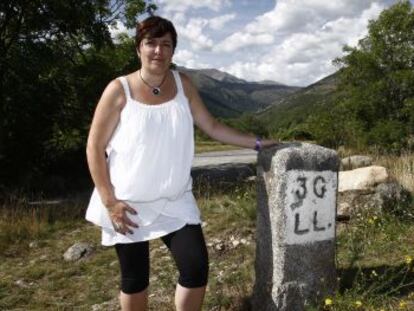The island that Spain and France rule for six months of every year
Today, as part of a twice-yearly tradition, Madrid formally cedes control of tiny Pheasant Island to France
In Spain’s northeastern Basque Country, between Irun and the French city of Hendaye – in the middle of the Bidasoa river that separates the two countries – there is a territory with a peculiar status: Pheasant Island (Isla de los Faisanes in Spanish).

Classified as a “condominium” (land shared under the joint ownership of two nations), it is both the smallest and oldest of its kind known to be in existence. Its 5,000 square meters belong to Spain for six months of the year and to France for the remaining six months. And today, it will peacefully transition to French hands, with that country managing it until the end of January 2018, before returning it to Spain again.
Though onlookers can see it from the shores of both countries – it is just 50 meters away from France and Spain – this small island is uninhabited and cannot be visited. Only members of the naval commands of San Sebastian and Bayonne can enter, as they are tasked with maintaining it while it’s under their respective jurisdictions.
Notably absent from Pheasant Island are pheasants themselves
“It requires little attention,” says Commander Rafael Preito, who was in charge of its administration until this past June. “People are very respectful, no one tries to trespass, even though sometimes the tide is so low you can almost walk across to it. We typically enter every five days to carry out routine maintenance,” he says.
There are no monuments on the island, except for a single monolith declaring its place in history. At this site, the Treaty of the Pyrenees was signed on November 7, 1659, ending a conflict initiated during the hugely destructive Thirty Years’ War. As the status of the landmass was previously undefined, one of the treaty’s clauses formally declared it a shared, neutral territory – symbolizing peace and cooperation between France and Spain. Since that time, several royal weddings and prisoner exchanges have taken place here.
The island has remained in relative peace for quite some time. The most recent disturbance occurred in 1974, when several members of the armed Basque-separatist group ETA, trying to cross the border, were caught near the island by the Civil Guard. The operation resulted in the death of an officer and one of the terrorists.

Perhaps the greatest danger the island has faced is its possible disappearance. When the condominium was first established, the island’s width had shrunk by half over the preceding two centuries because of erosion from the river. As a result, Spanish and French authorities agreed to do work to reinforce the island, and it paid off. Today, it is 215 by 38 meters in size, up from 80 by 5 meters at the time of the original agreement.
But notably absent from Pheasant Island are pheasants themselves, as French writer Victor Hugo complained during his visit to the site in 1843. “At most, there was a cow and three ducks, probably rented to take on the role of pheasants for visitors.” By some accounts, the original name was “Paussan Island.” By others, it was “Faisant Island.” Whatever it was, the current denomination is an adaptation to Spanish that is unreflective of reality. There are no pheasants here.
English version by Henry Hahn.
Tu suscripción se está usando en otro dispositivo
¿Quieres añadir otro usuario a tu suscripción?
Si continúas leyendo en este dispositivo, no se podrá leer en el otro.
FlechaTu suscripción se está usando en otro dispositivo y solo puedes acceder a EL PAÍS desde un dispositivo a la vez.
Si quieres compartir tu cuenta, cambia tu suscripción a la modalidad Premium, así podrás añadir otro usuario. Cada uno accederá con su propia cuenta de email, lo que os permitirá personalizar vuestra experiencia en EL PAÍS.
¿Tienes una suscripción de empresa? Accede aquí para contratar más cuentas.
En el caso de no saber quién está usando tu cuenta, te recomendamos cambiar tu contraseña aquí.
Si decides continuar compartiendo tu cuenta, este mensaje se mostrará en tu dispositivo y en el de la otra persona que está usando tu cuenta de forma indefinida, afectando a tu experiencia de lectura. Puedes consultar aquí los términos y condiciones de la suscripción digital.
More information
Archived In
Últimas noticias
How Japan is trying to avert ‘digital defeat’
From digital curfews to blocking apps: How technology experts protect their children online
Why the price of coffee has skyrocketed: from Brazilian plantations to specialty coffee houses
Confined to a Cuban hospital: When electricity is a matter of life or death
Most viewed
- Pablo Escobar’s hippos: A serious environmental problem, 40 years on
- Reinhard Genzel, Nobel laureate in physics: ‘One-minute videos will never give you the truth’
- Why we lost the habit of sleeping in two segments and how that changed our sense of time
- Charles Dubouloz, mountaineering star, retires at 36 with a farewell tour inspired by Walter Bonatti
- The Florida Keys tourist paradise is besieged by immigration agents: ‘We’ve never seen anything like this’











































